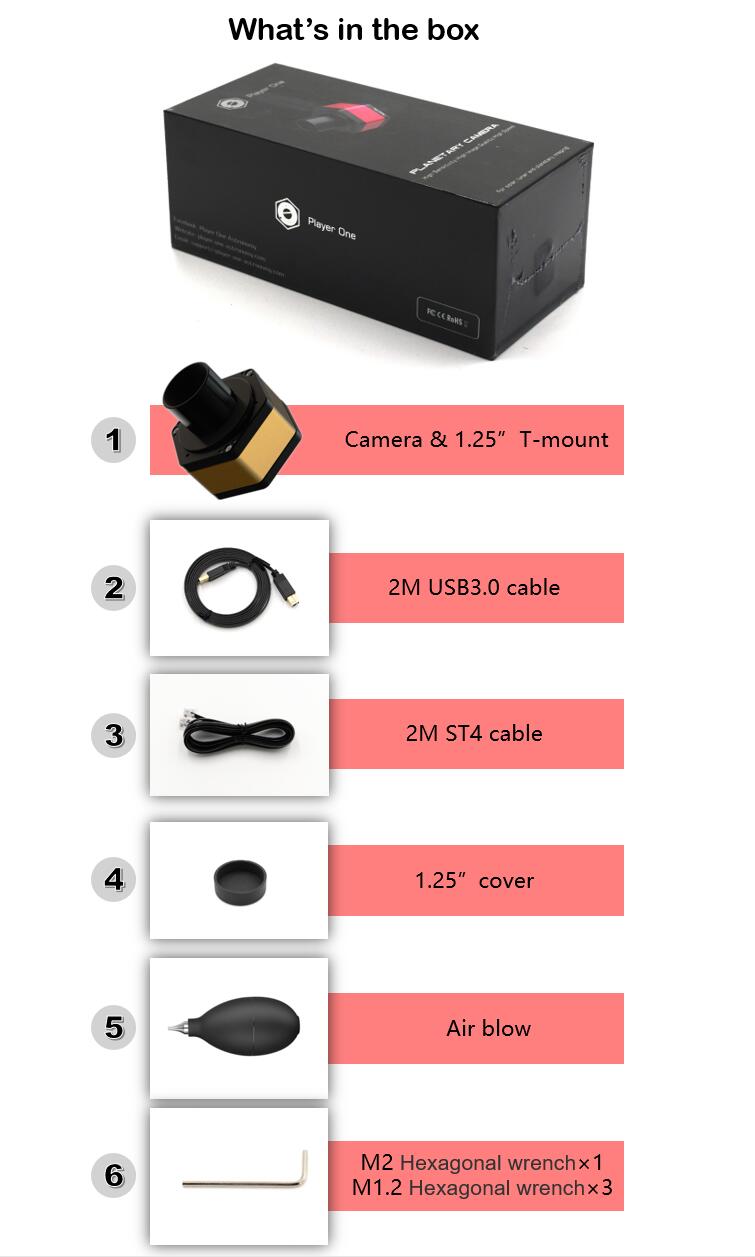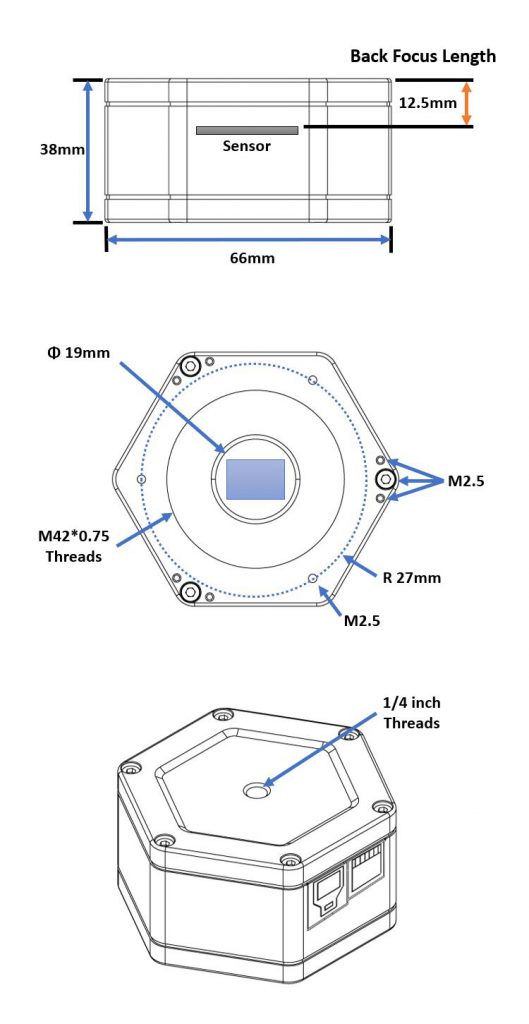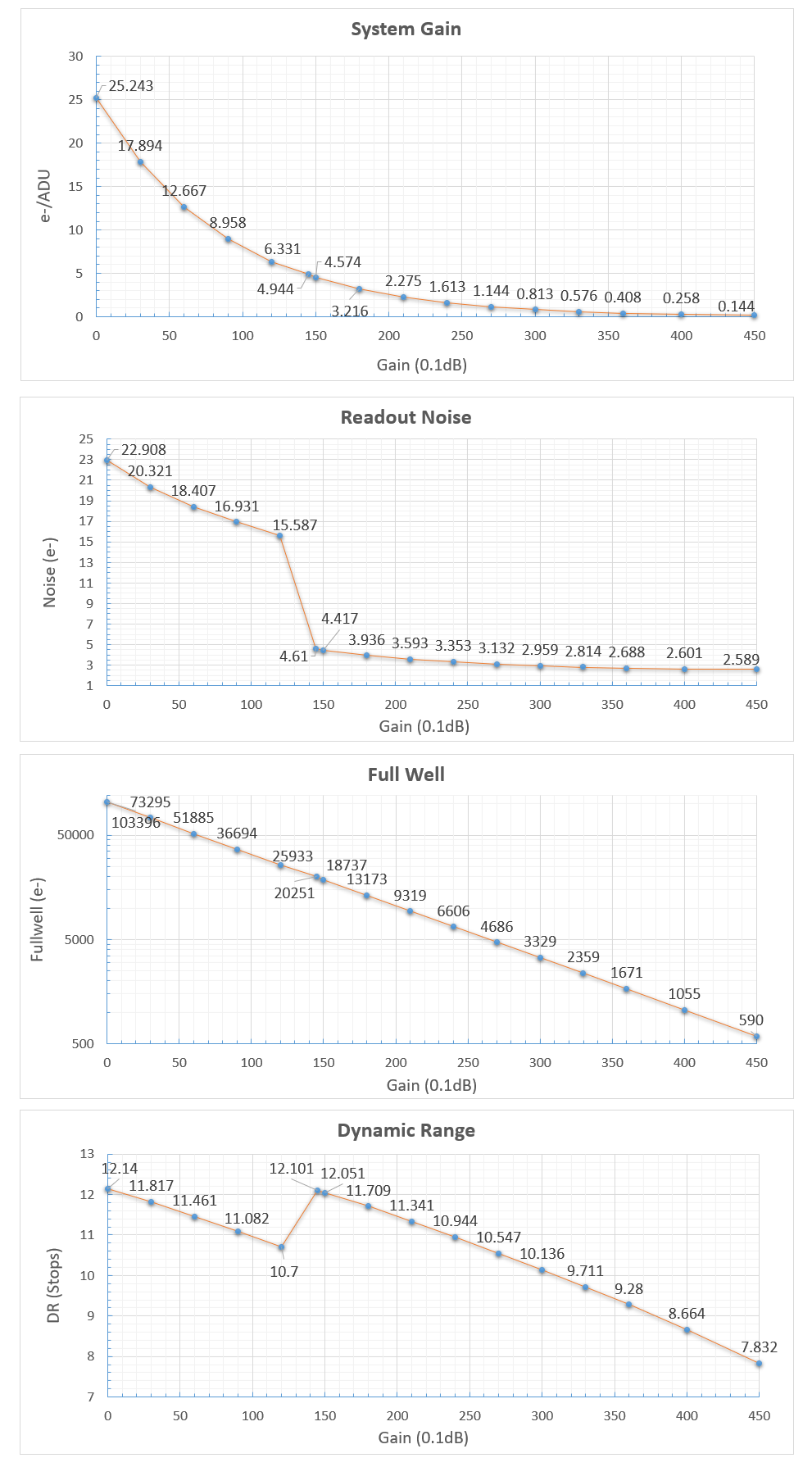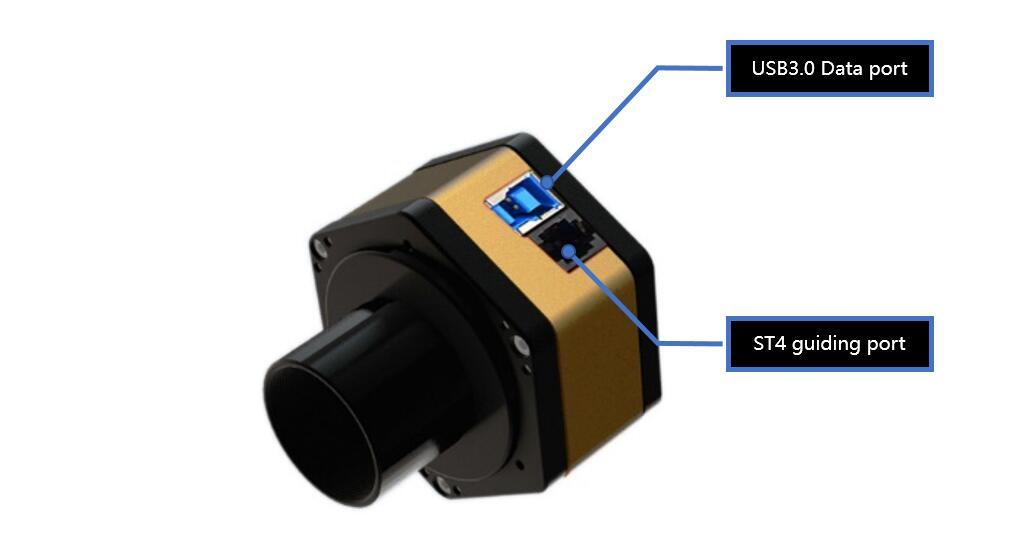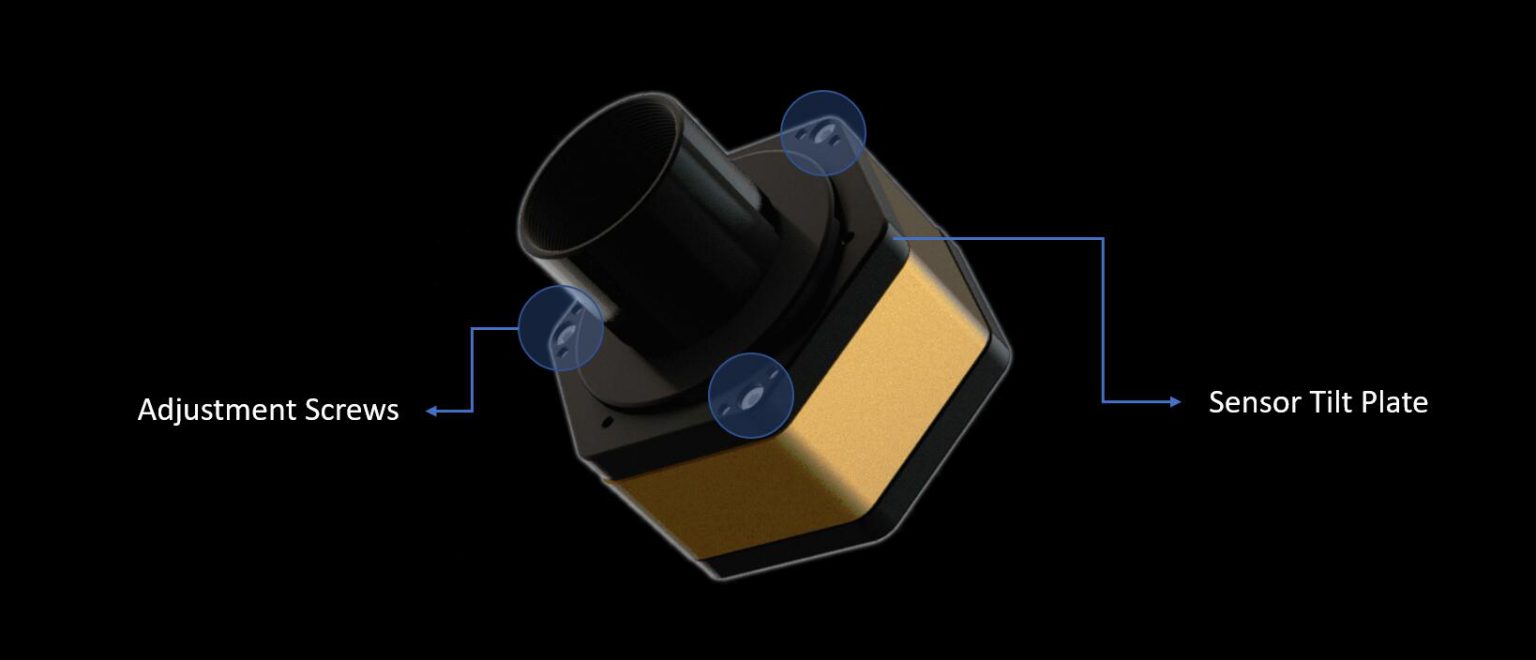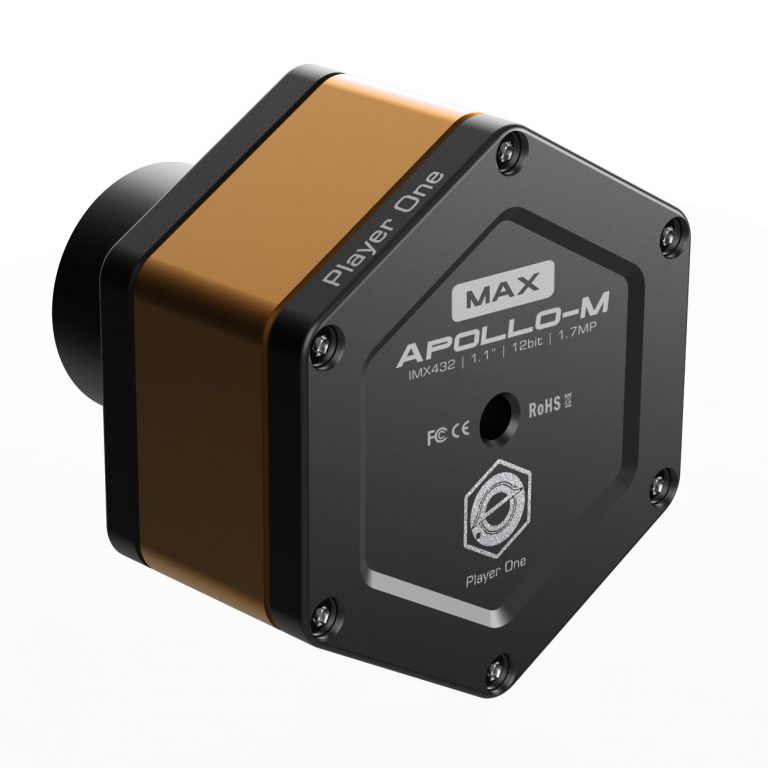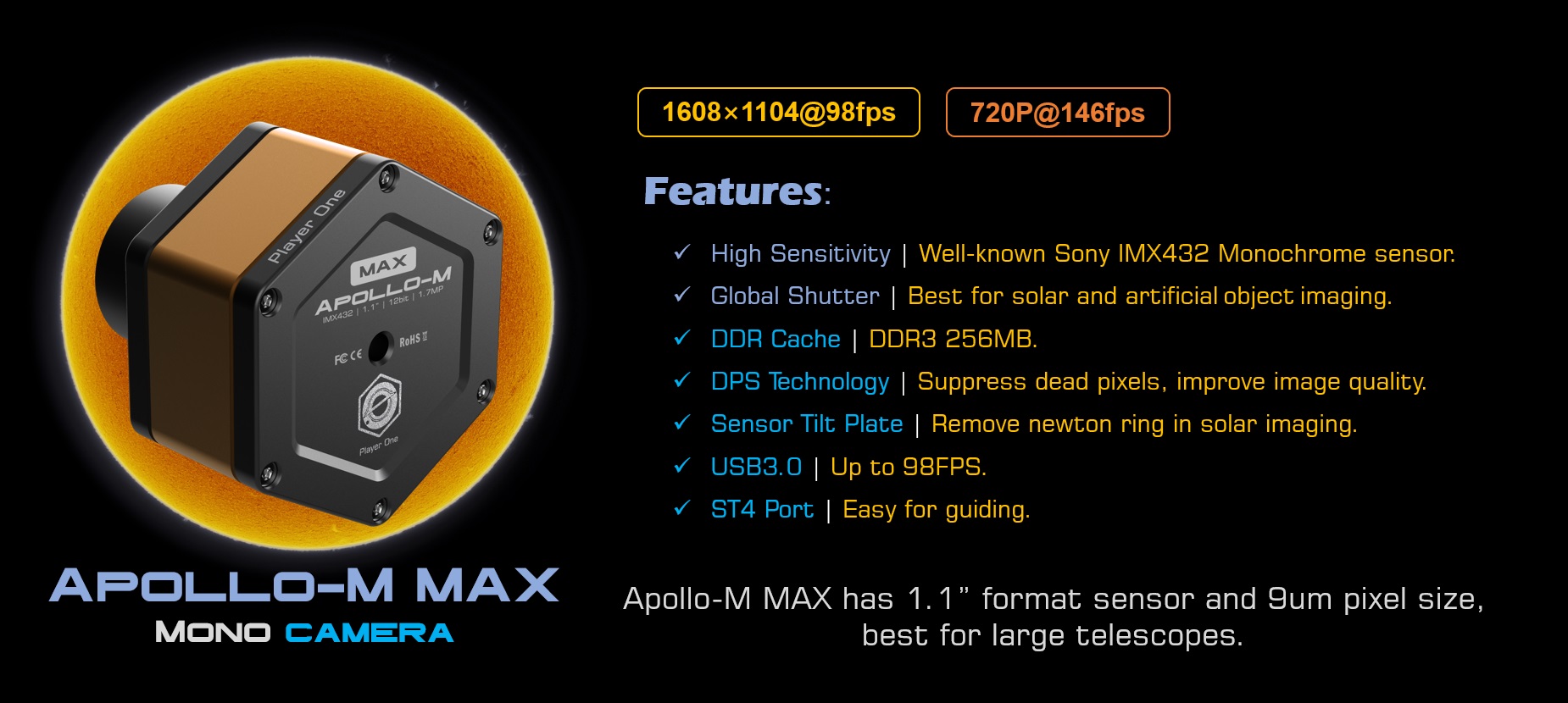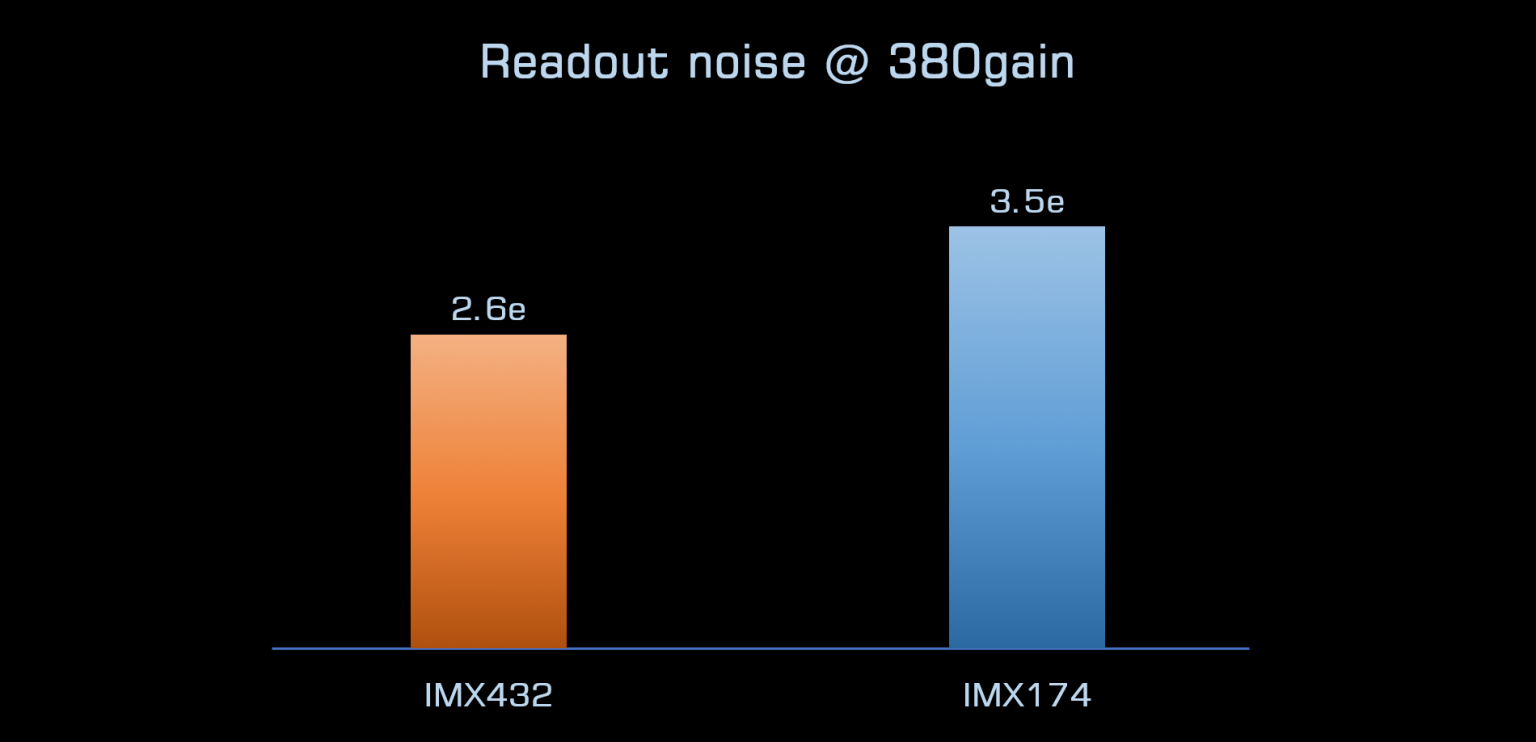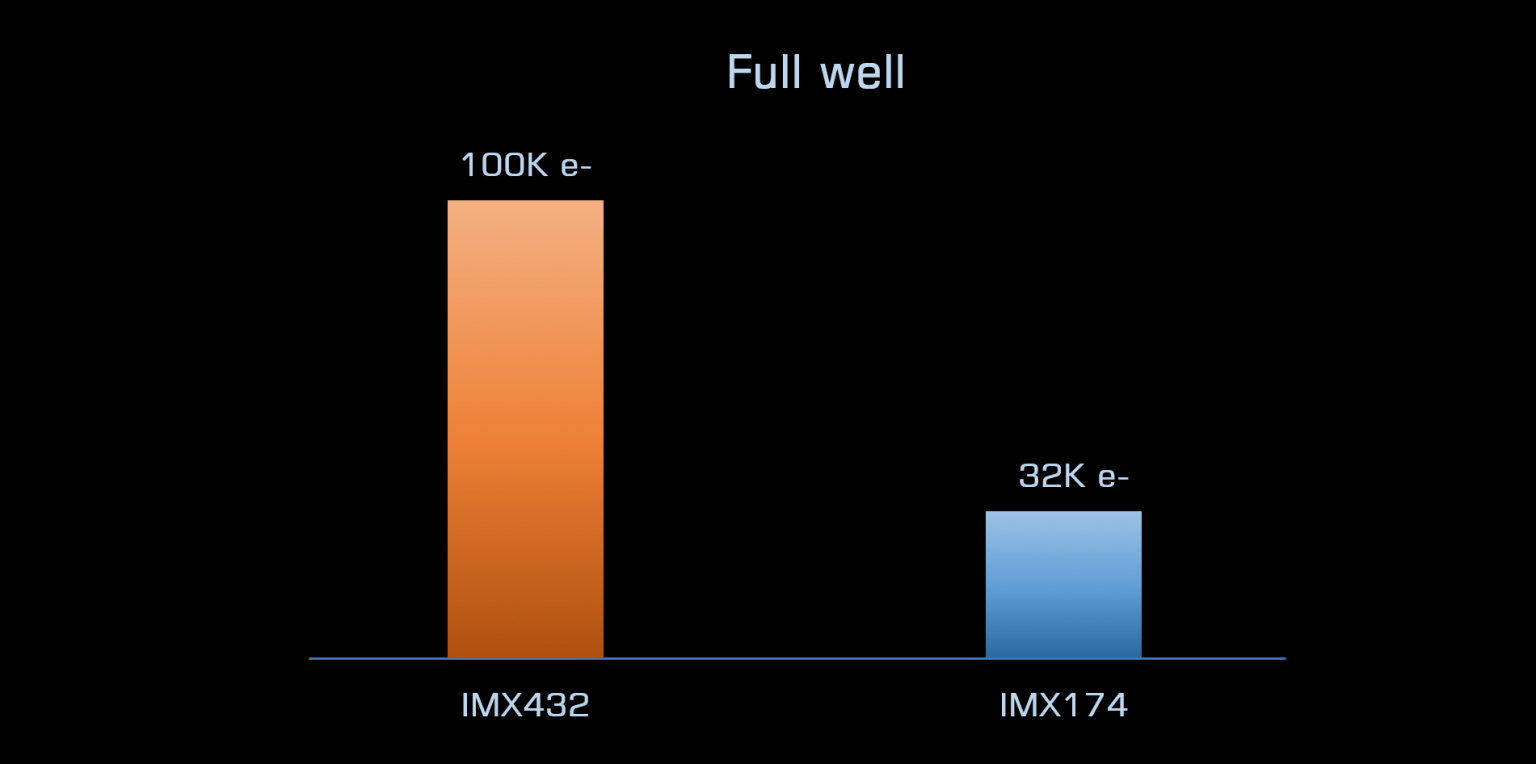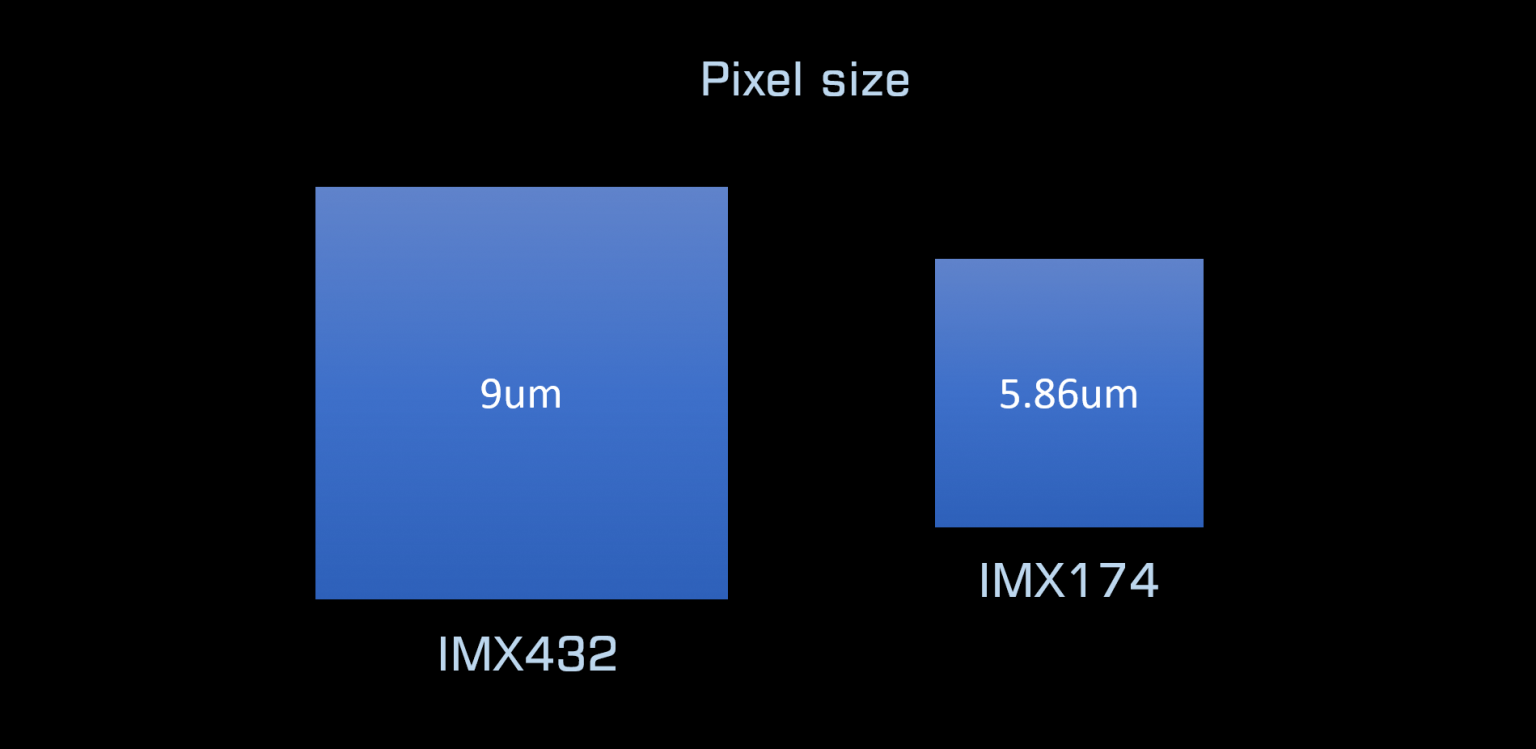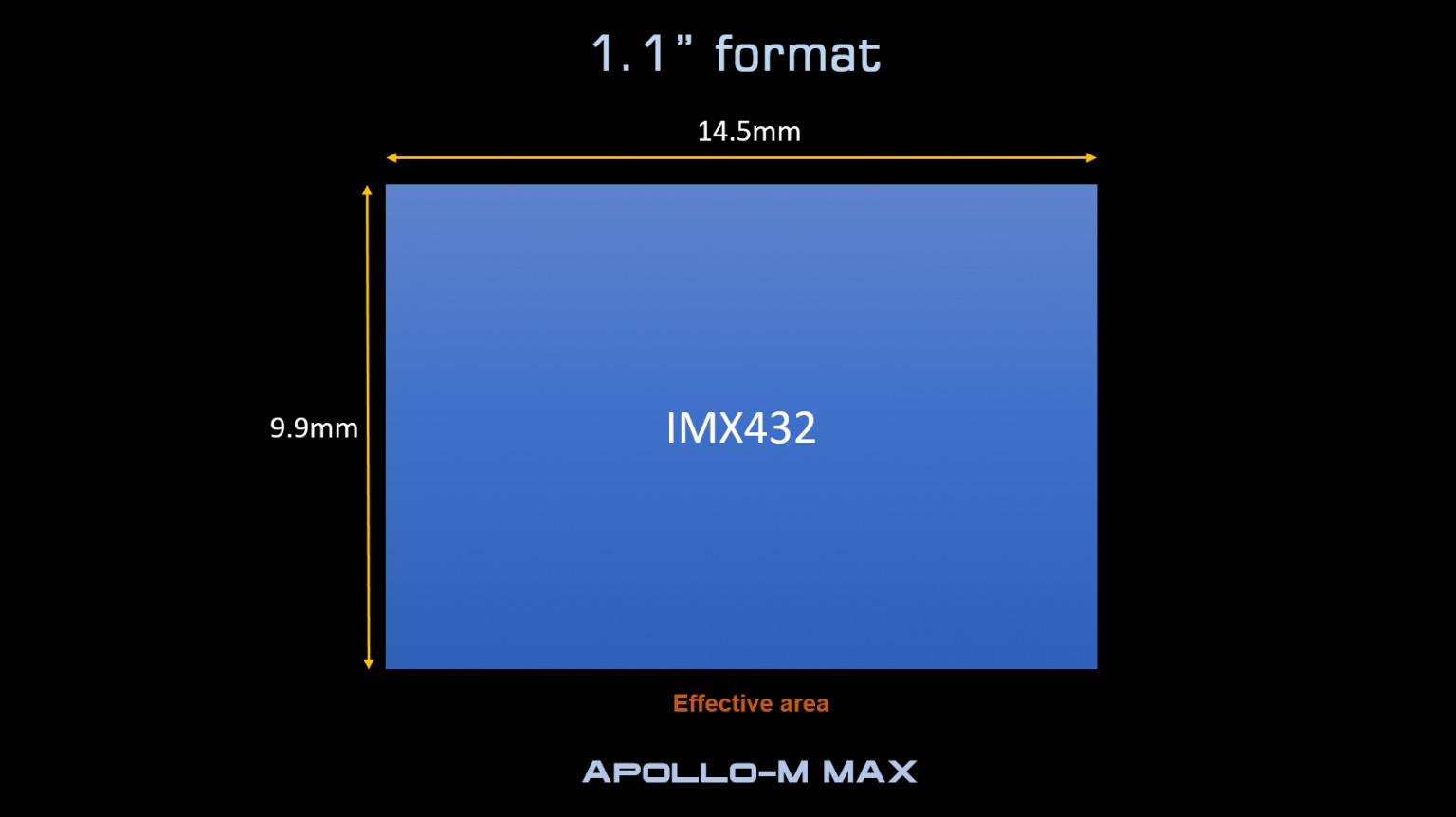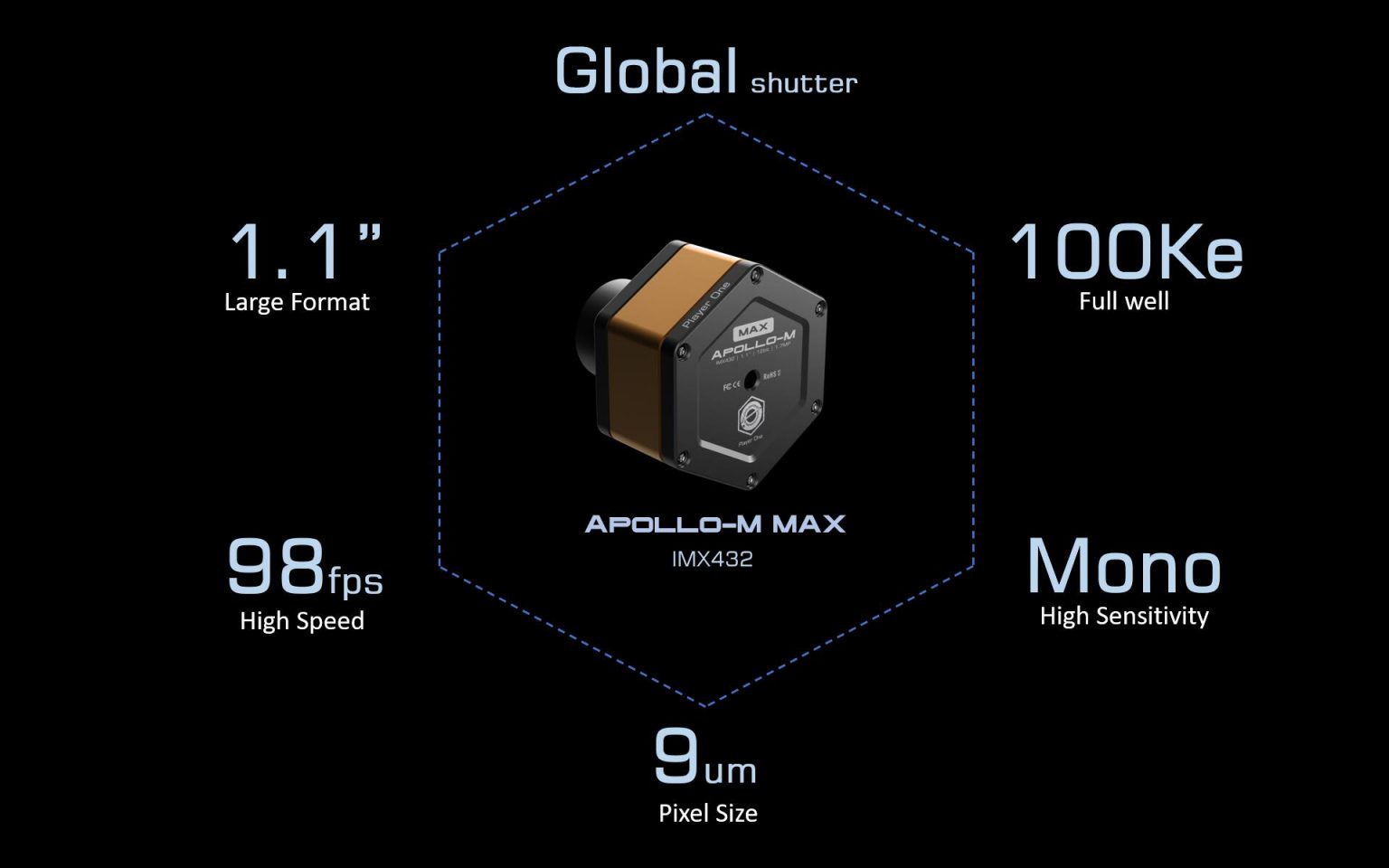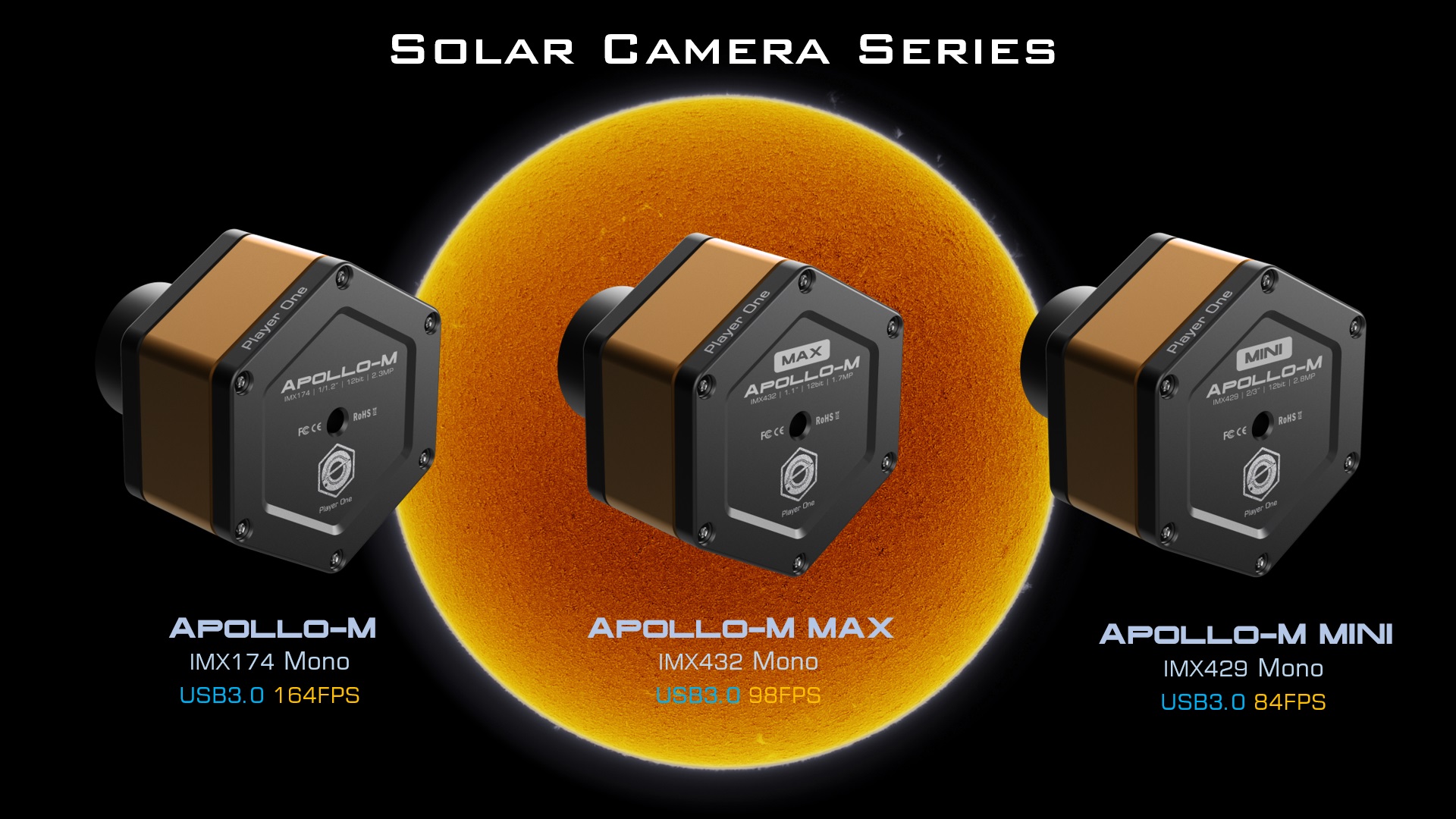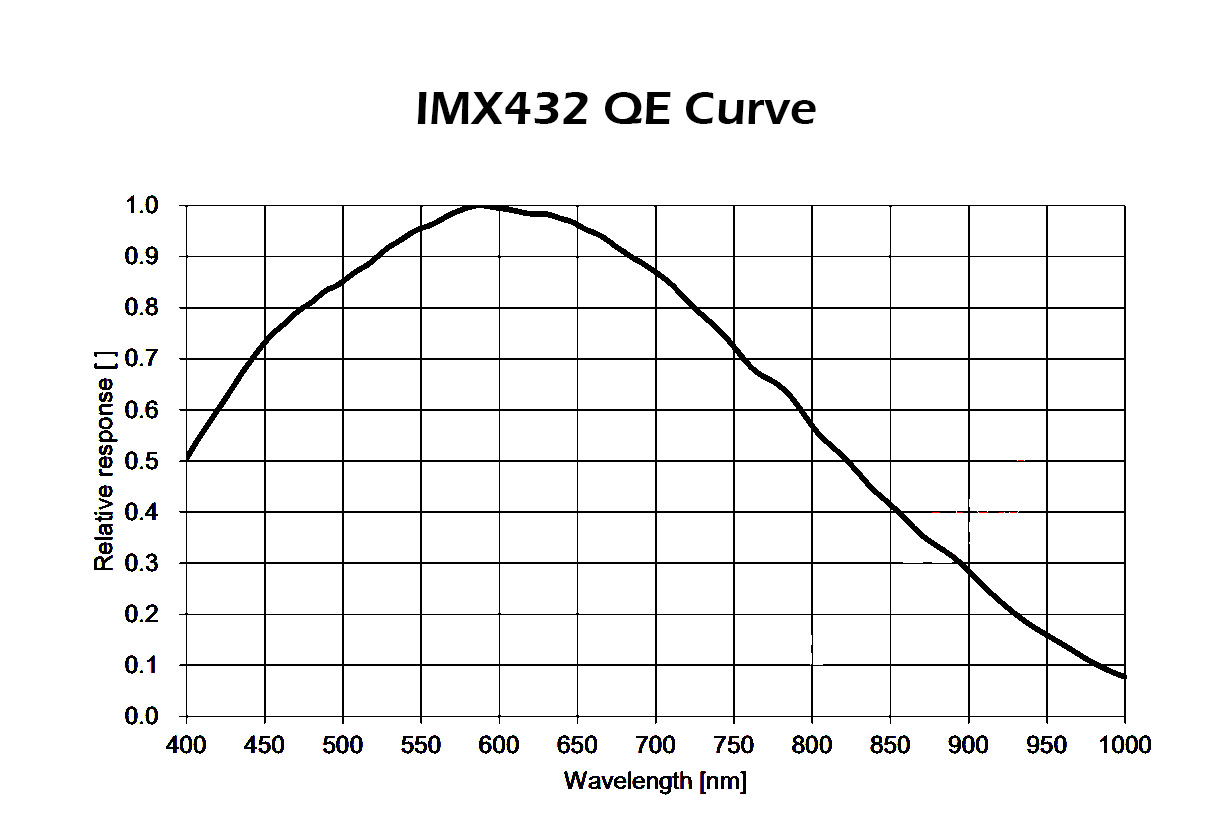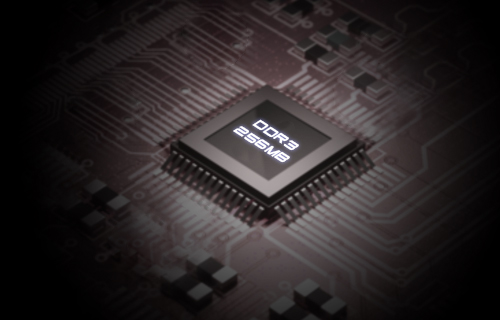Apollo-M MAX USB3.0 Mono Camera (IMX432) M [PL-APOLLO-MMAX]
1 in stock IN STOCK, usually ships within 48h or less directly from our Canadian warehouse
Sensor:IMX432 Format:1.1 inch Resolution:1608×1104 Pixels:1.7 MP FPS:98 FPS Mono Camera ADC:12bit Port:USB3.0 & ST4 Focus on Solar imaging!
Apollo series is the world’s first camera line designed specifically for solar photography, named after Apollo.
The Apollo series features Sony sensors with global shutters and a focus onProduct Description
Apollo-M MAX is a solar camera developed by Player One Astronomy, which adopts the Sony IMX432 1.1” format monochrome sensor. The 9um pixel size accommodates a well depth of 100ke with a total of 1.7MP (the resolution is 1608*1104), and the diagonal is 17.5mm. monochrome sensors.
Pregius Technology
IMX432 sensor is based on Pregius 3rd Generation. But IMX432 is quite different. According to the introduction of technical documents, pixel size of 3rd Gen usually is 4.5um, and full well is 25Ke. But this sensor has 9um pixel, and of course the full well up to 4x (100Ke).
IMX432 has 1.1″ format, it is pretty big, almost twice of IMX174 chip.
Pixel size
9um pixel size is 1.5 times bigger than IMX174 camera, which means it can works at longer focal ratio, such as SCT + Daystar filter(with 4.2X) .
Full Well
100Ke full well, is 3 times bigger than IMX174. This feature will bring some new possibility in imaging. What we can imagine is HDR the Sun and prominence, or maybe the bright and dark side of the Moon.
HCG and Noise
HCG mode will automatic open when Gain >145, readout noise will drop to 4.6e. And dynamic range will rise to 12 drops again.
At 380 gain, readout noise of IMX432 is 2.6e, it is lower than IMX174. And full well will still bigger than IMX174.
Highlights
No banding
Row noise problem is a big trouble in solar imaging. When we use IMX174 or IMX178 cameras, bandings occurs sometimes. Although we can fix this problem in post-processing, but it still does nagitive affect on the details.
The biggest surprise in testing Apollo-M MAX is, we found that images of IMX432 are so smooth, no annoying horizontal banding. So that, we can focus on capture details in any focal ratio, in any way ( full disk mosaic or ROI ) , never need to worry about banding issue in post-processing.
Cutting-edge Design
The planetary cameras developed by Player One Astronomy uses a scientific and technological regular hexagon to construct the main body line, supplemented by round chamfers to achieve both rigidity and flexibility. The positive orange, which is imply solar, is matched with the low-key and steady black, and the super-fine frosting process on the entire surface makes the camera look luxurious and cool, highlighting the style of high-end players, can’t take my eyes off 😀
Sensor Tilt Plate
When taking solar photograph with prominence telescope, the Newton ring is annoying. Smoother solar image without Newton ring could be taken by adjusting the focal plate. Get a much smaller field curvature of the telescope.
The built-in high-density sponge shading pad can block the light from the side slits without any side leakage.
256M DDR3 Cache
Player One Astronomy cameras are the first one who adpots the DDR3 cache in all planetary cameras in the world! It helps stabilize and secure data transmission, it effectively avoids frame dropping and greatly reduces readnoise.
With the DDR3 cache, the camera does not have high demands on computing needs any longer, it will still has excellent performance even if it is connected to a USB 2.0 port.
DPS technology
The planetary cameras from Player One Astronomy have DPS (Dead Pixel Suppression) technology. The DPS is anaylse many dark frames to find out thoes fixed abnormal pixel and record the map in camera memory. In imaging, each exposure frames, thoes position of dead pixels will be given a median value according to the active pixels around that abnormal pixel.
Overvoltage and overcurrent protection mechanism
Player One cameras produced by the number one player ensures the safety of your camera and other equipment through overvoltage and overcurrent protection mechanisms.
Data Port
When the camera is connected to the USB3.0 interface and full-resolution preview is used, it can reach 98FPS both in 12bit (RAW16) and 10bit(RAW8) mode. When recording images, since the actual writing speed will be affected by the writing speed of the hard disk itself, when the hard disk writing speed is slow, the recording may not reach the theoretical speed. It is recommended that you use a high-quality solid state drive to record data to give full play to the performance of the camera.
Use the ST4 guide cable to connect the camera and the AUTO GUIDE port of the equatorial mount to do guiding.
HCG Mode
The Apollo-M MAX camera has a unique HCG mode, which will automatically turn on when the camera gain setting is >145. The HCG mode can greatly reduce the readout noise and retain the same high dynamic range as the low gain.
About Apollo-M MAX USB3.0 Mono Camera (IMX432) M [PL-APOLLO-MMAX]
Player One:
- Sensor:IMX432
- Format:1.1 inch
- Resolution:1608×1104
- Pixels:1.7 MP
- FPS:98 FPS
- Mono Camera
- ADC:12bit
- Port:USB3.0 & ST4
Focus on Solar imaging!
Apollo series is the world’s first camera line designed specifically for solar photography, named after Apollo.
The Apollo series features Sony sensors with global shutters and a focus onProduct Description
Apollo-M MAX is a solar camera developed by Player One Astronomy, which adopts the Sony IMX432 1.1” format monochrome sensor. The 9um pixel size accommodates a well depth of 100ke with a total of 1.7MP (the resolution is 1608*1104), and the diagonal is 17.5mm. monochrome sensors.
Pregius Technology
IMX432 sensor is based on Pregius 3rd Generation. But IMX432 is quite different. According to the introduction of technical documents, pixel size of 3rd Gen usually is 4.5um, and full well is 25Ke. But this sensor has 9um pixel, and of course the full well up to 4x (100Ke).
IMX432 has 1.1″ format, it is pretty big, almost twice of IMX174 chip.
Pixel size
9um pixel size is 1.5 times bigger than IMX174 camera, which means it can works at longer focal ratio, such as SCT + Daystar filter(with 4.2X) .
Full Well
100Ke full well, is 3 times bigger than IMX174. This feature will bring some new possibility in imaging. What we can imagine is HDR the Sun and prominence, or maybe the bright and dark side of the Moon.
HCG and Noise
HCG mode will automatic open when Gain >145, readout noise will drop to 4.6e. And dynamic range will rise to 12 drops again.
At 380 gain, readout noise of IMX432 is 2.6e, it is lower than IMX174. And full well will still bigger than IMX174.
Highlights
No banding
Row noise problem is a big trouble in solar imaging. When we use IMX174 or IMX178 cameras, bandings occurs sometimes. Although we can fix this problem in post-processing, but it still does nagitive affect on the details.
The biggest surprise in testing Apollo-M MAX is, we found that images of IMX432 are so smooth, no annoying horizontal banding. So that, we can focus on capture details in any focal ratio, in any way ( full disk mosaic or ROI ) , never need to worry about banding issue in post-processing.
Cutting-edge Design
The planetary cameras developed by Player One Astronomy uses a scientific and technological regular hexagon to construct the main body line, supplemented by round chamfers to achieve both rigidity and flexibility. The positive orange, which is imply solar, is matched with the low-key and steady black, and the super-fine frosting process on the entire surface makes the camera look luxurious and cool, highlighting the style of high-end players, can’t take my eyes off 😀
Sensor Tilt Plate
When taking solar photograph with prominence telescope, the Newton ring is annoying. Smoother solar image without Newton ring could be taken by adjusting the focal plate. Get a much smaller field curvature of the telescope.
The built-in high-density sponge shading pad can block the light from the side slits without any side leakage.
256M DDR3 Cache
Player One Astronomy cameras are the first one who adpots the DDR3 cache in all planetary cameras in the world! It helps stabilize and secure data transmission, it effectively avoids frame dropping and greatly reduces readnoise.
With the DDR3 cache, the camera does not have high demands on computing needs any longer, it will still has excellent performance even if it is connected to a USB 2.0 port.
DPS technology
The planetary cameras from Player One Astronomy have DPS (Dead Pixel Suppression) technology. The DPS is anaylse many dark frames to find out thoes fixed abnormal pixel and record the map in camera memory. In imaging, each exposure frames, thoes position of dead pixels will be given a median value according to the active pixels around that abnormal pixel.
Overvoltage and overcurrent protection mechanism
Player One cameras produced by the number one player ensures the safety of your camera and other equipment through overvoltage and overcurrent protection mechanisms.
Data Port
When the camera is connected to the USB3.0 interface and full-resolution preview is used, it can reach 98FPS both in 12bit (RAW16) and 10bit(RAW8) mode. When recording images, since the actual writing speed will be affected by the writing speed of the hard disk itself, when the hard disk writing speed is slow, the recording may not reach the theoretical speed. It is recommended that you use a high-quality solid state drive to record data to give full play to the performance of the camera.
Use the ST4 guide cable to connect the camera and the AUTO GUIDE port of the equatorial mount to do guiding.
HCG Mode
The Apollo-M MAX camera has a unique HCG mode, which will automatically turn on when the camera gain setting is >145. The HCG mode can greatly reduce the readout noise and retain the same high dynamic range as the low gain.
| Sensor |
SONY IMX432 1.1" CMOS (mono) |
|---|---|
| Diagonal |
17.5mm |
| Total Pixels |
1.7 Mega Pixels |
| Max Resolution |
1608×1104 |
| Pixel Size |
9μm |
| Chip Size |
14.5mm×9.9mm |
| Frame Rate |
98FPS(10bit) |
| Shutter |
Global shutter |
| Exposure Range |
32μs-2000s |
| Readout Noise |
22.9e~2.6e |
| QE Peak |
≈77% |
| Full Well |
100k e |
| ADC |
12 bit |
| Data Port |
USB3.0/USB2.0 |
| Adapter |
1.25″ / M42X0.75 |
| Back Focal Length |
12.5mm |
| Protective Window |
AR coating |
| Diameter |
66mm |
| Weight |
180g |
| Resolution and FPS |
Under USB3.0 mode |
Shipping Options
Shipping options and prices may vary depending on the total value of your order. Your final shipping price will be determined at checkout.
Options shown are based on your estimated location.
-
$24.00 USD - [zus] USPS Ground Shipping (7-14 days)
Shipping Size
-
Size0 in × 0 in × 0 in
-
Weight0 lb

.jpg.fc3278dc4d8a9cca9c440dcf1f894ecb.jpg)
